
In de snelle wereld van vandaag zijn persoonlijke gezondheid en welzijn topprioriteiten geworden voor veel individuen. Minter, een toonaangevende innovator in de gezondheidszorg, heeft een baanbrekend product geïntroduceerd dat de voordelen van waterstof en zuurstof combineert in een unieke machine die is ontworpen voor thuisgebruik. De Minter Waterstof Zuurstof Machine springt eruit als een geavanceerde oplossing voor degenen die een holistische benadering van hun gezondheid en welzijn routine willen integreren.
Deze innovatieve machine maakt gebruik van geavanceerde technologie om een uitgebalanceerde mix van waterstof en zuurstof te genereren, twee elementen die essentieel zijn voor de algehele gezondheid en welzijn. Het therapeutische gebruik van waterstof en zuurstof is bestudeerd vanwege het potentieel om de cellulaire gezondheid te verbeteren, het immuunsysteem te versterken en de sportprestaties te verbeteren. De Waterstof Zuurstof Machine van Minter biedt deze voordelen in een veilige, gebruiksvriendelijke indeling die kan worden geïntegreerd in het dagelijks leven.

Als een van de meest significante zorgverleners ter wereld, staat Minter altijd aan de frontlinie in het bieden van innovatieve oplossingen. Als bewijs van onze toewijding aan het verbeteren van de gezondheidszorgstandaarden, hebben we de Minter Waterstofzuurstofmachine geïntroduceerd. Dit is een krachtig apparaat dat waterstofgas combineert met zuurstofgas om de algehele lichaamsfitness te verbeteren en tal van gezondheidsvoordelen te bieden.
Het primaire doel van de Minter Waterstofzuurstofmachine is om de lucht die we inademen te reinigen door deze te voorzien van twee essentiële elementen die nodig zijn voor levensondersteuning. Terwijl waterstof werkt als een ontstekingsremmende verbinding waarvan wordt aangenomen dat deze oxidatieve stress vermindert, fungeert zuurstof als een noodzakelijke component voor de optimale werking van verschillende lichaamssystemen. Deze gassen zijn wederzijds inclusief als het gaat om onze apparaten; ze streven naar betere ademhalingsfuncties, verhoogde energieniveaus en verbeterd mentaal en fysiek welzijn, onder andere dingen.
De Waterstofzuurstofmachine van Minter maakt gebruik van geavanceerde technologie die de activiteit van het ademhalingssysteem aanzienlijk verhoogt, waardoor ook gezondere leefomgevingen worden bevorderd. Het is uitgerust met geavanceerde zuiveringssystemen die elke keer dat je ze gebruikt nauwkeurigheid garanderen. Deze machines kunnen thuis of op andere plaatsen zoals ziekenhuizen worden gebruikt, aangezien ze nieuwe manieren van werken bieden die mensen over de hele wereld ten goede komen. Bovendien is de interface ontworpen om gebruiksvriendelijk te zijn, terwijl hij compact genoeg blijft zodat hij gemakkelijk in verschillende opstellingen past.
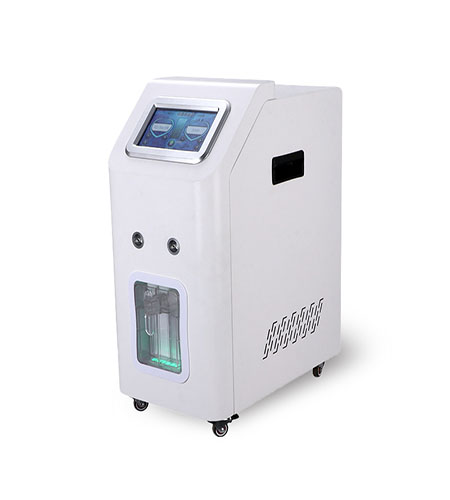
Gezond blijven is een grote zorg geworden in de voortdurend veranderende wereld van de gezondheidszorg. Deze verandering is toegeschreven aan de ontwikkeling van gezondheidsproducten, wat de reden is waarom de waterstofzuurstofmachine is gemaakt. Als koploper in deze industrie is Minter trots op het aanbieden van dergelijke geavanceerde apparatuur die algemeen welzijn bevordert. Een uniek kenmerk van dit creatieve apparaat is het vermogen om waterstof en zuurstof continu te produceren, zodat ze kunnen worden gebruikt voor ademhalingsdoeleinden tegen verschillende ziekten. Waterstofinhalers, waterstofflessen, tandheelkundige producten, massageproducten en fysiotherapie-apparatuur zijn allemaal inbegrepen in één pakket dat bekend staat als Minter's waterstofzuurstofmachine.
De nieuwe benadering van preventieve geneeskunde wordt gebracht door het gebruik van geavanceerde technologie, aangetoond door de waterstofzuurstofmachine van Minter. De gasmengselpercentages die het genereert, maken het aantrekkelijk voor atleten die hun algehele vitaliteit willen verbeteren, evenals voor oudere mensen die voor altijd sterk willen blijven. Veel mensen zijn zich al bewust van de genezende aard van waterstofgas, daarom kan met deze hydroxy-maker van Minter iedereen ook direct profiteren van die ontdekkingen! Van het verminderen van oxidatieve stressniveaus tot het versnellen van spierherstelpercentages - er is geen andere uitvinding zoals deze ergens anders op aarde die zoveel gezondheidsverbeteringen in één keer kan bieden!
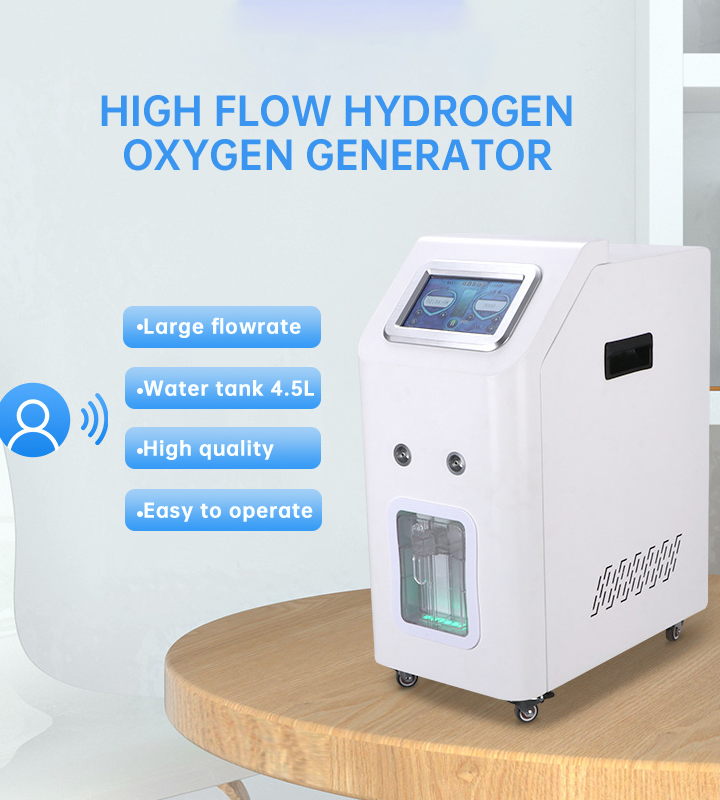
Een groot voordeel van de door Minter ontwikkelde waterstofzuurstofmachine is dat deze puur zuurstof kan maken en tegelijkertijd kleine hoeveelheden waterstofgas kan vrijgeven. Dit helpt om voor het hele lichaam te zorgen, aangezien beide elementen talrijke positieve effecten op de mens hebben. Het bloed stroomt gezond als we de geproduceerde zuurstof rechtstreeks inademen, waardoor de voorziening die nodig is voor de levensnood van de vitale organen toeneemt. Aan de andere kant worden vrije radicalen die schadelijk zijn voor ons lichaam geneutraliseerd door waterstofatomen, waardoor oxidatieve stress risico's worden verlaagd en tegelijkertijd het algemene cellulaire welzijn wordt bevorderd.
Minter's veelzijdige product heeft veel toepassingen in de gezondheidszorg; onder andere behandelingsopties voor verschillende ademhalingsziekten zoals COPD (Chronisch Obstructief Longziekte) of astma. De symptomen kunnen worden verlicht en de ademhaling verbeterd met behulp van alleen pure zuurstof die uit dit apparaat wordt gegenereerd in tijden waarin patiënten problemen hebben met hun ademhalingssystemen. Naast normale therapieën zoals bestraling, die bijwerkingen hebben die de toestand van de patiënt kunnen verergeren, kan gecombineerd gebruik samen met conventionele geneeskunde helpen bij het verminderen van ongewenste reacties en tegelijkertijd het algemene werkzaamheidsniveau verbeteren.
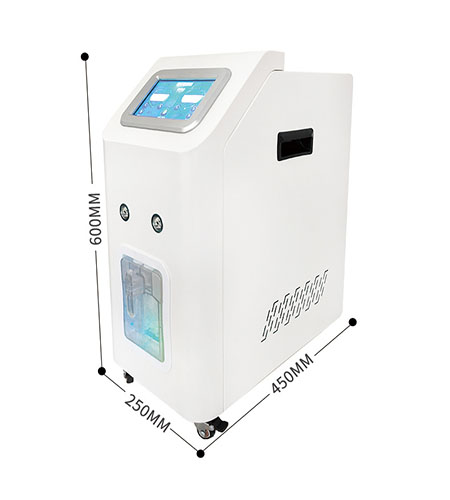
Voor degenen die hun ademhalingsgezondheid willen verbeteren met verschillende methoden, is de Minter waterstofzuurstofmachine een van de meest geavanceerde op de markt van vandaag. Wat het doet, is gas produceren dat rijk is aan waterstof door gebruik te maken van moleculaire waterstoftechnologie en vervolgens gebruikers in staat te stellen het in te ademen voor verschillende voordelen. Een ding over moleculaire waterstof is dat het ontstekingsremmende eigenschappen heeft en ook kan verbeteren hoe zuurstof wordt gebruikt binnen de organen van het lichaam volgens studies die op dit gebied zijn gedaan. Mensen kunnen hun ademhalingsproblemen verlichten met de machines van Minter terwijl ze hun leven comfortabeler maken door gemakkelijk dit belangrijke element in te ademen.
Mobiel zijn in combinatie met eenvoud vormt een ander groot voordeel dat wordt geboden door de Hydrogen Oxygen Machine van Minters; waardoor dit een van de belangrijkste verkoopargumenten is. Dit betekent dat ongeacht waar je bent, of thuis, op kantoor of zelfs onderweg, alles wat een persoon nodig heeft, is het aansluiten op stekkers om direct te genieten van therapieën vol met ruimtes van waterstofionen zonder enige vertraging! Bovendien hebben deze modieuze apparaten gebruikersvriendelijke interfaces, waardoor ze goed passen in onze collectie van gezondheidsapparatuur zoals tandverzorgingssets; en we hebben ontdekt dat dergelijke apparaten het beste werken samen met andere soortgelijke apparaten zoals hydro-inhalators en waterflessen met H2-gasinhoud! Dus als ze correct worden geïntegreerd in dagelijkse routines, kunnen mensen altijd gezond blijven met schone longen gedurende hun hele leven!
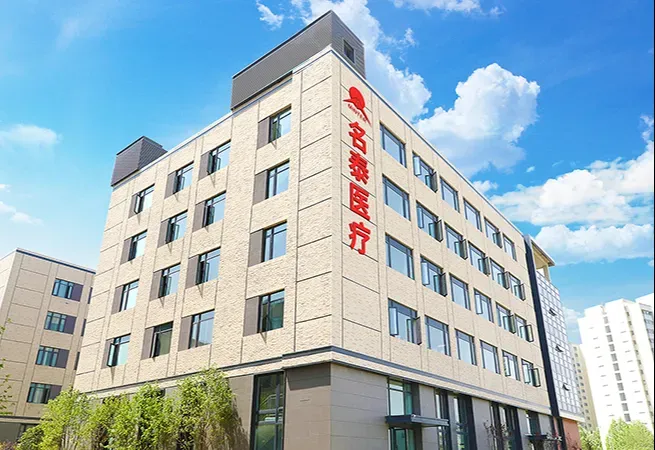
Zhengzhou Minter Medical Devices Co., Ltd. is een professionele leverancier van gezondheidszorgproducten. Met vele jaren ervaring heeft Minter zijn eigen gespecialiseerde onderzoeks- en ontwikkelingscentrum en een productiebasis voor medische apparatuur.
Van de zorgvuldige selectie van grondstoffen tot de strenge inspectie van de producten, we zorgen ervoor dat elke stap voldoet aan de hoogste kwaliteitsnormen. Nu hebben de meeste producten van Minter CE, ISO, ROHS, FCC en andere certificeringen gehaald.
Onze hoofdproducten zijn gezondheidsproducten zoals een waterstofinhalator, waterstofwaterfles, tandartsproducten, massagereparatieën en fysiotherapieapparatuur.
Omdat we altijd de klanttevredenheid voorop stellen en uitstekende after-sales ondersteuning bieden, hebben onze producten grote populariteit gewonnen bij klanten uit Noord-Amerika, Zuid-Amerika, West-Europa, Oost-Europa, Zuidoost-Azië, enz.
Onze R & D-afdeling biedt de sterke technische ondersteuning en stelt ons in staat om OEM en ODM aan overzeese klanten over de hele wereld aan te bieden. Wij verwelkomen klanten van thuis en aan boord van harte om onze fabriek te bezoeken en een samenwerkingsverhouding met ons op te bouwen. We kijken ernaar uit om meer samenwerking te krijgen.
We hebben een elite team dat zich richt op productonderzoek en -ontwikkeling en werken samen met een aantal bekende universiteiten om strategische samenwerking te bereiken in productie, onderwijs en onderzoek, internationale geavanceerde technologie te introduceren en in producten te integreren.
Met een toewijding aan uitmuntendheid, implementeert Minter strenge kwaliteitscontrolemaatregelen gedurende het productieproces. Van zorgvuldige selectie van grondstoffen tot grondige productinspecties, elke stap voldoet aan de hoogste kwaliteitsnormen. Deze toewijding aan kwaliteitsborging resulteert in producten die consequent voldoen aan of de regelgeving certificeringen zoals CE, ISO, ROHS, FCC overtreffen, wat zorgt voor betrouwbaarheid en veiligheid voor klanten wereldwijd.
Wij leveren OEM/ODM diensten en professionele technische ondersteuning voor alle klanten die ons monsters van de producten sturen. We zullen op basis van de monsters betere monsters ontwerpen en ontwikkelen. Voor elke klant kiezen wij het beste materiaal en ook innovatief materiaal voor hun producten.
De nadruk van Minter op klanttevredenheid en uitstekende after-sales ondersteuning heeft zijn producten naar grote populariteit gedreven in diverse regio's, waaronder Noord-Amerika, Zuid-Amerika, West-Europa, Oost-Europa en Zuidoost-Azië. Deze wijdverspreide waardering betekent het vermogen van het merk om te resoneren met een wereldwijd publiek en een sterke aanwezigheid te vestigen in belangrijke markten.

30
Apr
30
Apr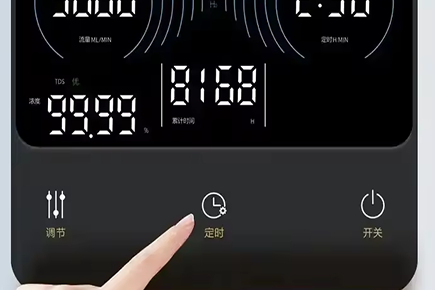
30
AprHet is een apparaat dat waterstof en zuurstof genereert door elektrolyse, vaak gebruikt voor gezondheidsdoeleinden.
Het splitst water in waterstof- en zuurstofgassen met behulp van elektrolyse.
Studies suggereren dat ze de antioxidantbescherming kunnen verbeteren en het algehele welzijn kunnen bevorderen.
Ja, veel modellen zijn ontworpen voor thuisgebruik. Volg altijd de instructies van de fabrikant.


Copyright © - Privacybeleid